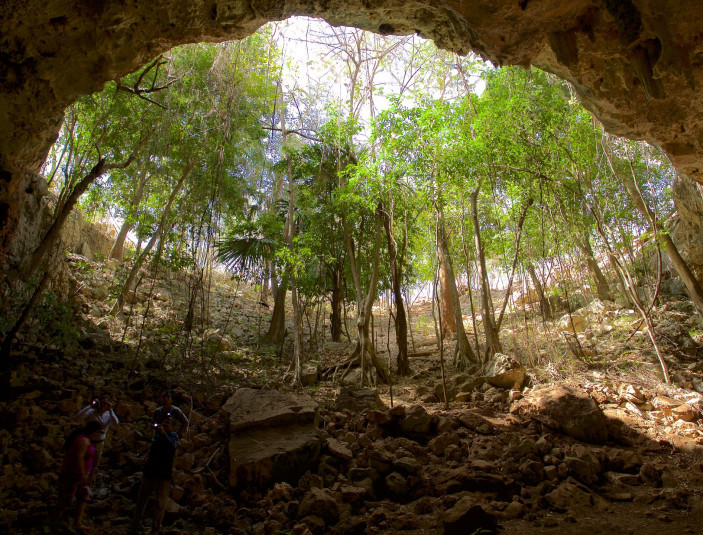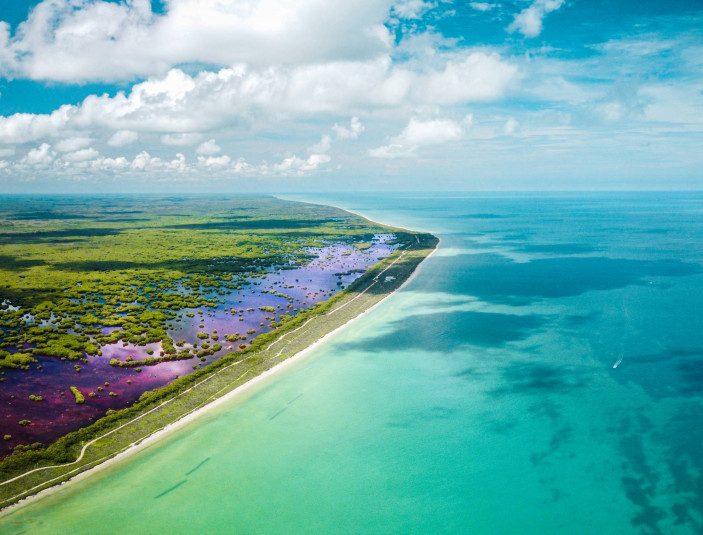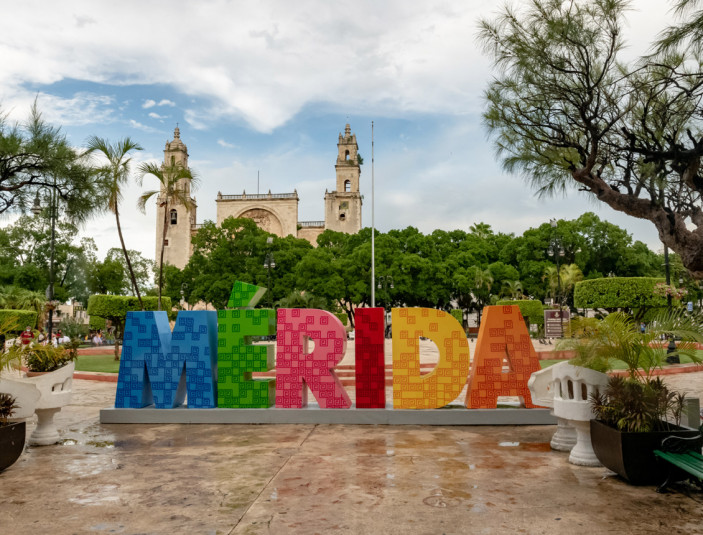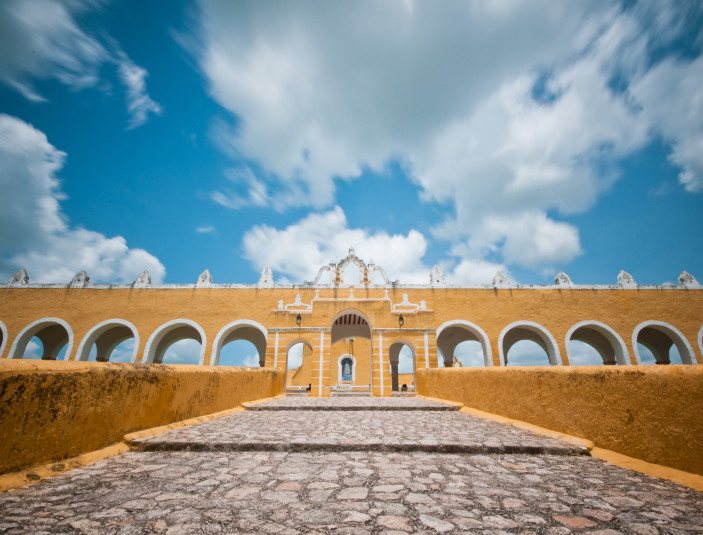About
The sky is getting ready to unveil its magic in an unparalleled event. On October 14th, Yucatán adorns itself with mystery and astonishment as it becomes the stage for the first annular solar eclipse in four centuries. Imagine being a part of a moment as fleeting as it is extraordinary, a moment our generation has the exclusive privilege to witness.
The magnificence of this astronomical phenomenon is not just due to its rarity; it's a reminder of the wonder of the cosmos and our small yet significant existence within it. This eclipse isn't merely an astronomical event; it's a profound connection with the universe, a journey through time, and an encounter with history.
As the sun and the moon dance in a cosmic ballet, Yucatán becomes the perfect host, providing a landscape that enhances the beauty of this occurrence. But after this magical instant, we'll have to wait for hundreds of years for its next appearance.
So, why not be a part of history? Come to Yucatán, look up to the sky, and let yourself be captivated by the eclipse that unites generations. Don't miss it!
 Annular Solar Eclipse
Annular Solar EclipseAnnular Solar Eclipse
What is it?
A solar eclipse occurs when the Moon passes between the Sun and the Earth. The Moon casts a shadow on certain regions of the Earth, blocking the sunlight either partially or entirely.
On the upcoming Saturday, October 14th, weather conditions permitting, we will be able to observe an annular solar eclipse. This type of eclipse occurs when the Moon is aligned between the Sun and the Earth, but it is at its farthest point from Earth, making it appear smaller and not fully blocking the Sun's view. The Moon in front of the Sun will look like a dark disk over a larger, brighter disk. This creates the illusion of seeing a ring around the Moon, known as the "ring of fire."

The last time we had the opportunity to observe a total solar eclipse in Mexico was on July 11, 1991, over 30 years ago. After the eclipses of 2023 and 2024, in Mexico, we won't be able to witness a total solar eclipse until the year 2052 (which will be fully visible in the central part of the country), while in Yucatán, a solar eclipse won't be visible until 2071.
Annular Solar Eclipse Festival
During the eclipse, our festival will offer you a variety of activities to commemorate this astronomical phenomenon. If you're drawn to the mysteries of the universe, we will have observation spaces equipped with advanced telescopes that will bring you closer to the stars like never before. Savour this cosmic experience with workshops and presentations where experts will unveil their knowledge and passion for the starry sky. However, the festival goes beyond astronomy and science; it's a tribute to the deep tradition of Yucatán. Allow yourself to be enchanted by the talent of traditional cooks and the exquisite regional crafts. Delight in a mosaic of cultural and touristic experiences that will immerse you in the soul of Yucatán.
This is not just a festival; it's an invitation to celebrate, learn, and marvel. So, come and make history with us in Yucatán! The dance of the sun and the moon awaits you in an event that will be etched into your memory forever.
 Maxcanú
MaxcanúActivities in Maxcanú
- Universidad Tecnológica del Poniente (Western Technological University).
- Observation with telescopes and solar filters.
- Talks, workshops, and demonstrations will lead us into the knowledge of Mayan solar products, meliponiculture, or agroecology. Additionally, we will have the participation of students from various UTP programs, as well as guided walks on the university's campus.
Interesting facts:
- Visibility percentage: +90%.
- Duration of annularity: 4 minutes, 9 seconds.
- Eclipse schedule: 09:45 to 13:08 - 11:22 maximum of annularity.
 Tekax
TekaxActivities in Tekax
- At the base of the Ermita.
- Observation with telescopes and solar filters.
- Talks, workshops, and demonstrations that allow us to learn about dry tropical forests, geological knowledge, and the formations of our state's caves, but also about traditional medicine and flora, as well as various topics related to the Mayan people, mathematics, and physics.
Interesting facts:
- Visibility percentage: +90%.
- Duration of annularity: 2 minutes, 16 seconds.
- Eclipse schedule: 09:46 to 13:07 - 11:25 maximum of annularity.
 Sisal
SisalActivities in Sisal
- At the UMDI, Sisal of the UNAM.
- Observation with telescopes and solar filters.
- Talks, workshops, and demonstrations will lead us into the knowledge of the biodiversity of Yucatán's wetlands, dunes, estuaries, and coastal waters, from which species of high commercial value are extracted, such as shrimp or the Mayan octopus. Additionally, there will be discussions related to the conservation of marine species.
Datos de interés:
- Visibility percentage: +90%.
- Duration of annularity: 1 minute, 8 seconds.
- Eclipse schedule: 09:44 to 13:07 - 11:22 maximum of annularity.
 Mérida
MéridaActivities in Mérida
Venue:
- Parque Ecológico Metropolitano del Sur Yumtsil (Yumtsil South Metropolitan Ecological Park), Museo de la Luz (Museum of Light), Gran Museo del Mundo Maya (Great Museum of the Maya World).
Activities:
- Observation with telescopes and solar filters.
- Talks, workshops, and demonstrations related to environmental conservation, physics, astronomy, and Mayan culture.
Interesting facts:
- Visibility percentage: 90%.
- Duration of annularity: N/A (Not Applicable).
- Eclipse schedule: 09:45 to 13:08 - 11:24 maximum eclipse visibility.
 Izamal
IzamalActivities in Izamal
Venue:
- Centro Estatal de Capacitación, Investigación y Difusión Humanística de Yucatán (State Center for Training, Research, and Humanistic Outreach of Yucatán).
Activities:
- Observation with telescopes and solar filters.
- Talks, workshops, and demonstrations that lead us into the knowledge of the identity elements of the Mayan people, as well as topics related to the universe and the solar system. Visitors will have the opportunity to learn about legends, traditional games, as well as experiments and physics demonstrations, or even the assembly of kaleidoscopes.
Interesting facts:
- Visibility percentage: 80%.
- Duration of annularity: NA (Not Applicable).
- Eclipse schedule: 09:45 to 13:08 - 11:24 maximum eclipse visibility.
